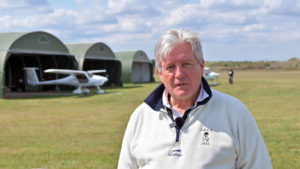With a huge demand for housing threatening airfields across the UK, Alan Peaford explores the effect of conflicting demands on regional and urban air ambitions
Lose our airfields and they’re “lost for good” – that’s the stark warning from John Gilder of the General Aviation Awareness Council (GAAC).
While NASA is calling for local airfields to be protected to facilitate the development of urban and regional advanced air mobility, in the UK, major towns and cities like Plymouth, Sheffield, Ramsgate and Hatfield are seeing vital sites go under the hammer. Airfields near Stratford-on-Avon, Cambridge and the London suburbs are also currently at risk from planning applications. It’s a similar story in the USA, which is home to more than 5,000 airports, but just 30 of these airports serve more than 70 per cent of all travellers.
Existing airfields vital for greener transport network
But now, with giant developmental leaps being made by companies in regional air mobility sector, special efforts are being made to change the regulations surrounding development on existing airfields which could provide vital infrastructure for a greener transport network.
GAAC is calling for a change in the law to classified as vital infrastructure – making it harder for them to be targeted by developers. John Gilder vice chairman of the GAAC said legislatory changes were vital for the UK to realise its vision of net zero domestic air transport: “It is a big problem, because if we lose them, we’ve lost them for good. The chances of building new airfields are pretty remote.”
“We’ve got a planning application going in for a new airfield at the moment. But they’re difficult to get through the planning process, there’s a lot of vested interests involved, so it’s complex. The threats to airfields? Obviously, there’s the question of house building – people want the land for homes, irrespective of where it is and how remote is, is really the price of the land that’s important for the for the builder. And of course, you can’t blame the owners if they’re offered large sums of money to sell the land. So it’s been a big problem and legislation needed to change.”
Cheaper flights and better connectivity make electric aviation a “no brainer”
Neil Cloughley, founder and CEO of Faradair which is building its BEHA Bio Electric Hybrid Aircraft at Duxford, said preserving smaller airports and airfields was a “no brainer”.
He explained: “Out of the 300 aircraft that we’ve designated to build by 2030, 40 of those, we’re going to base in the UK at these types of airfields and operate regional intercity pairings and inter town pairings that have never been done before.”
“It’s hugely important and I think it’s really good to emphasise the likes of Elstree, Stableford, Fairoaks airfields like this around London, you imagine flying to Liverpool, Manchester, Leeds for £25 each way, in 45 minutes from airfields like that. It’s a no brainer. Why on earth would we get rid of that?”
As well as being fundamental for landing, airfields and airports are also vital for storage. Gilder explained: “People forget that if you have unmanned aerial vehicles, they still need to be stored, they need to be maintained, they will not be in the air all the time.”
“And the obvious thing, if you’re going to control them, you need the same sort of facilities as you have at an airfield where you’ve got good lines of sight and you can see them they’ve got plenty of room just in case something goes wrong. So it’s very important that we keep the airfield sites that we’ve got to enable technology, as its progressing now, to become really useful to the communities of the future.”
More connectivity and jobs, less noise and emissions
The new advanced electric aviation systems will have less noise and intrusion, meaning less disturbance for residents below.
“The aircraft’s been designed to be ultra quiet from day one,” explained Cloughley, “Most people won’t even notice the things flying in the air, through the electric motors, and then we’ve got the turbo generator, where we port the exhaust through numerous silencers and then filter in the acoustic ducts, so it will be incredibly quiet.”
The emerging regional air sector uses new, lower emissions aircraft within the traditional network. The retention of existing airports will not only help grow connectivity, it will also help grow employment opportunities.
Cloughley added: “So all of that comes together to give a package that ultimately will give people that local connectivity, it’s that ability for people to say, actually, I could be within 15-20 minutes of a local airfield that could get me to somewhere in Ireland and somewhere in Scotland, Wales, or even skipping across to France on a really low cost basis and a convenient basis.”

